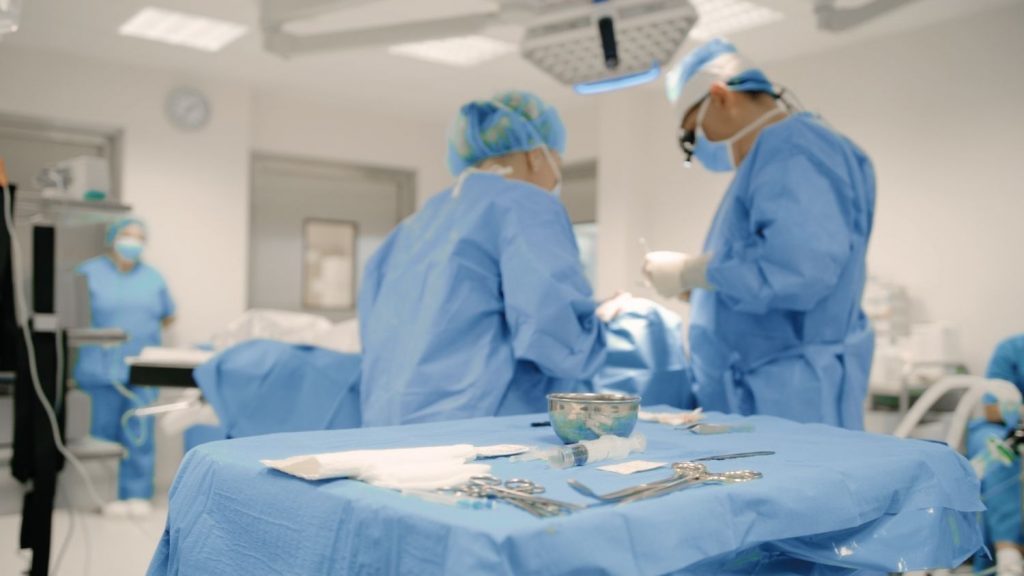Arthroscopic surgeries extend the life of physically active individuals

Kęstutis Bliznikas, orthopaedist and trauma specialist at Northway Medical Centre says that ‘If not operated on in time, the cartilage will wear off over time. If a patient delays surgery, they may need even to have the joint replaced’. Kęstutis has been practising orthopaedics and traumatology for over a decade and regrets that Lithuanians keep living in pain. He stresses that if you wait too long to deal with joint problems, it may be too late to help.
Arthroscopic repair of the knee joint is one of the most common procedures performed in orthopaedic surgery in Lithuania and worldwide. How old would you say your patients tend to be?
Most of them are young, capable of working and physically active individuals. In recent years, we have noticed an increase in people’s physical activity: they do more skiing, water sports and action (extreme) sports. At the same time, they get injured more often. In connection with this, the number of arthroscopic repairs is also increasing. The main conditions related to knee joint traumas include anterior cruciate ligament (ACL) tears, meniscal tears and cartilage injuries: in other words, damaged body structures that almost never heal naturally. We also deal with home accidents, but these are rare cases.
When did this type of surgery emerge in Lithuania? How does it differ from standard surgery?
Arthroscopy in Lithuania dates to over two decades ago. An arthroscopic surgery is a type of keyhole (or minimally invasive) surgical procedure which involves making a tiny incision in the treated area and inserting a special instrument (a device called an arthroscope) fitted with a video and optical system to perform both diagnostic and curative managements. This type of surgery is not an ‘open’ operation, so it does not damage the tissues surrounding the affected area. The post-operative period is usually shorter, the patient suffers less pain, recovers quicker and has almost invisible scars. If the surgery is successful, the patient will be able to return to their normal physical activities such as sport. In this way, arthroscopy extends the life of physically active individuals. In this case, accurate and timely diagnosis is extremely important. The sooner the surgery is performed, the shorter the recovery period before the patient can return to normal life. Usually, patients can go home on the third day after arthroscopic surgery.
You have mentioned that arthroscopies are also performed on elderly people?
Yes, we do perform surgeries on older patients too. One of my eldest patients is 87 and she is in very good health. In some cases, people cannot tell that they have an injury; they simply complain about pain, which usually occurs due to a traumatic meniscus tear. We keep pointing out to people that they must follow the recommendations when exercising and doing sports, and if the pain continues for over 4 weeks, they should immediately seek medical advice. Our medical experience has shown that Lithuanians keep suffering from pain for quite a long time, but if you wait too long, it could be too late to get help.
What can long-lasting pain and waiting to seek medical help lead to?
If your cruciate ligament has been injured, the long-lasting instability of the knee joint can lead to complications and meniscal tears which are usually repaired through a complicated surgical procedure. Accordingly, the results of these surgeries can vary and be less successful compared to surgeries done in time and in the absence of complications. For this reason, you should never ignore any pain.
In which other cases you use arthroscopy?
According to the latest medical methodology, we use keyhole surgery to restore ligaments of the knee joint, repair and restore cartilage, and to stitch or remove the injured part of the meniscus through the tiny cuts without damaging the surrounding tissues. Surgical removal of the entire meniscus is not currently a common practice at all. Typically, arthroscopy is used to treat meniscal tears, but if it is possible to stitch the meniscus, then it is repaired.
Are there any seasonal trends in arthroscopy?
I can’t say there are prominent seasonal variations. We perform arthroscopic surgeries throughout the year, but we still observe an increase in the stream of patients in spring: injured skiers return home, including patients who failed to manage the disease without surgery. At the end of summer, our patients are mainly people who participate in water sports.
How long does it take to recover after arthroscopic surgery?
Arthroscopic surgery is a minimally invasive procedure which does not affect the surrounding tissues of the treated area, and for this reason, the post-operative period is shorter. After partial removal of the meniscus, young people usually take 2-4 weeks to recover. During the first week, they need to use crutches to walk. But if the meniscus has been repaired by stitching, a patient will receive more restrictive instructions for recovery. In this case, they will need to use crutches for around 4 weeks. The recovery process and rehabilitation take longer and can sometimes extend to 3-4 months. Normally, recovery takes around six months before the patient can return to physical activity. Recovery periods vary depending on the complexity of the surgery. The recovery period for elderly patients is longer because of concomitant injuries (the deeper the injury, the longer recovery will take).

